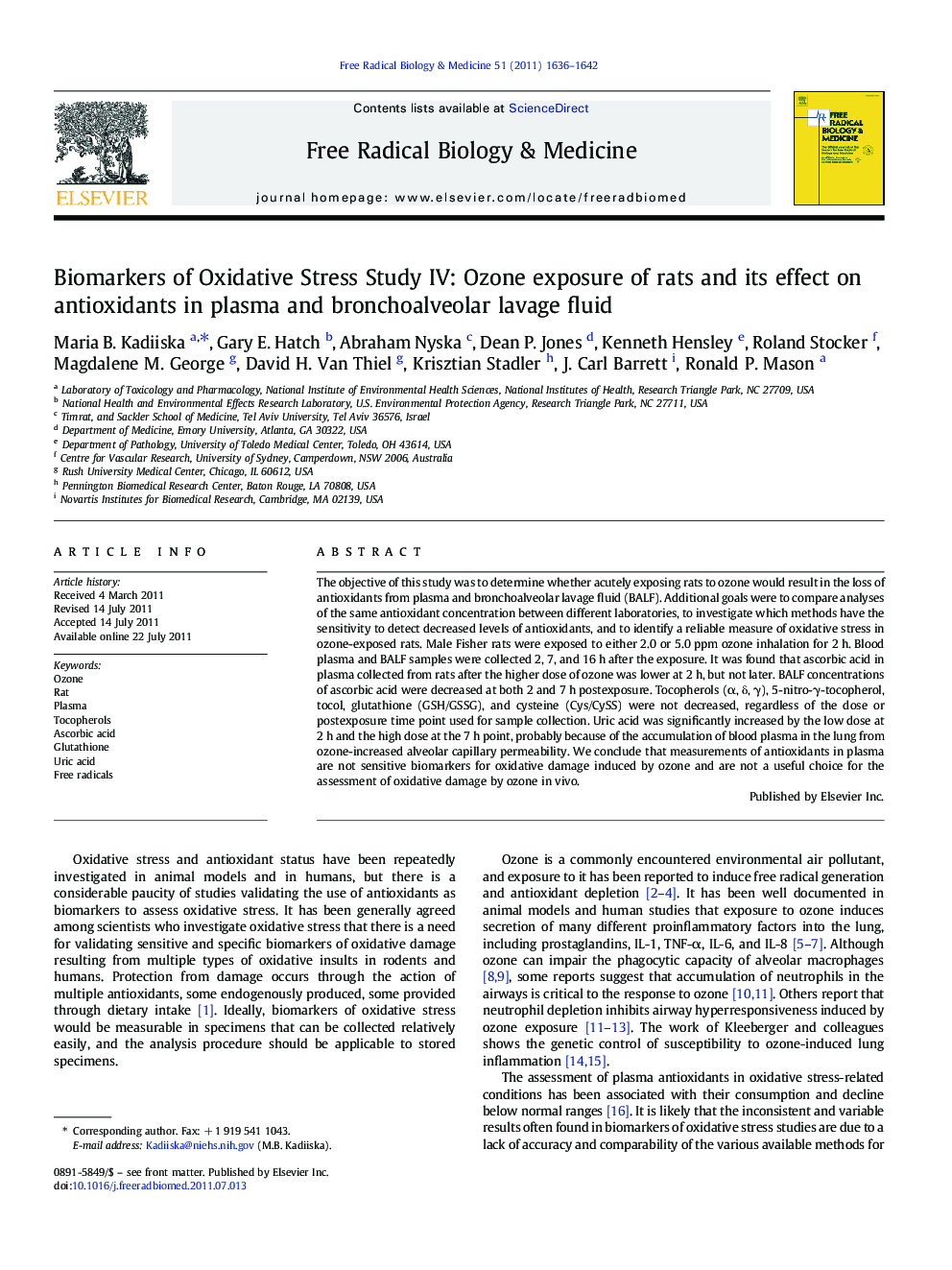| Article ID | Journal | Published Year | Pages | File Type |
|---|---|---|---|---|
| 10738468 | Free Radical Biology and Medicine | 2011 | 7 Pages |
Abstract
The objective of this study was to determine whether acutely exposing rats to ozone would result in the loss of antioxidants from plasma and bronchoalveolar lavage fluid (BALF). Additional goals were to compare analyses of the same antioxidant concentration between different laboratories, to investigate which methods have the sensitivity to detect decreased levels of antioxidants, and to identify a reliable measure of oxidative stress in ozone-exposed rats. Male Fisher rats were exposed to either 2.0 or 5.0 ppm ozone inhalation for 2 h. Blood plasma and BALF samples were collected 2, 7, and 16 h after the exposure. It was found that ascorbic acid in plasma collected from rats after the higher dose of ozone was lower at 2 h, but not later. BALF concentrations of ascorbic acid were decreased at both 2 and 7 h postexposure. Tocopherols (α, δ, γ), 5-nitro-γ-tocopherol, tocol, glutathione (GSH/GSSG), and cysteine (Cys/CySS) were not decreased, regardless of the dose or postexposure time point used for sample collection. Uric acid was significantly increased by the low dose at 2 h and the high dose at the 7 h point, probably because of the accumulation of blood plasma in the lung from ozone-increased alveolar capillary permeability. We conclude that measurements of antioxidants in plasma are not sensitive biomarkers for oxidative damage induced by ozone and are not a useful choice for the assessment of oxidative damage by ozone in vivo.
Related Topics
Life Sciences
Biochemistry, Genetics and Molecular Biology
Ageing
Authors
Maria B. Kadiiska, Gary E. Hatch, Abraham Nyska, Dean P. Jones, Kenneth Hensley, Roland Stocker, Magdalene M. George, David H. Van Thiel, Krisztian Stadler, J. Carl Barrett, Ronald P. Mason,
